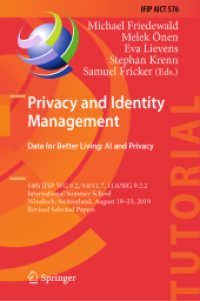- ホーム
- > 洋書
- > ドイツ書
- > Humanities, Arts & Music
- > Linguistics
- > general surveys & lexicons
Full Description
This book offers a comprehensive exploration of recent advances in empirical, theoretical, and experimental research on language change, with a focus on semantic evolution.








